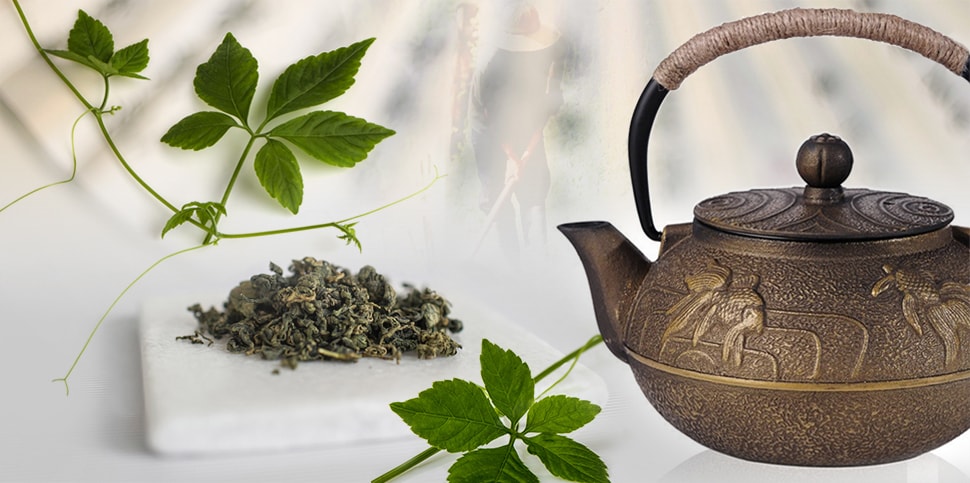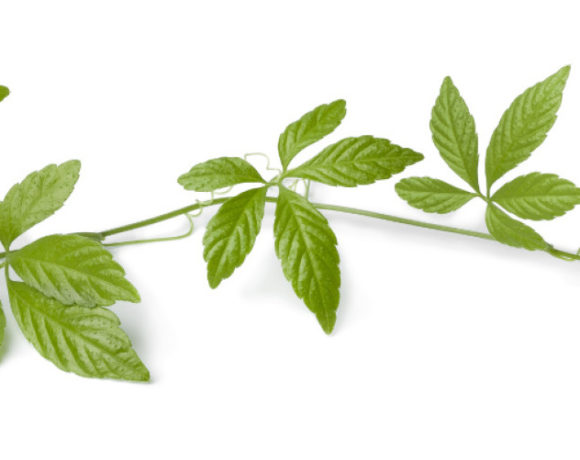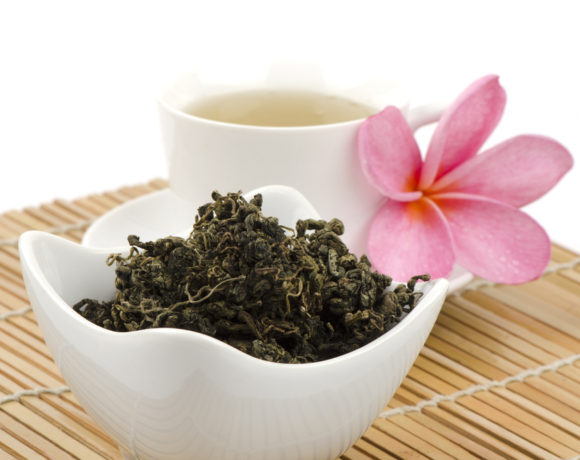 Jiaogulan (latin: Gynostemma Pentaphyllum) is low growing five-leafed vine in the same family as cucumber plants and a variety of gourds. The leaves of the jiaogulan plant have been consumed as a tea in southern China for centuries. Residents in the Guangxi and Shicuan provinces called the herb Xiancao which translates as, “the immortality herb” and it was well known for its many beneficial properties. However, jiaogulan did not come to the attention of the medcial reseacrh community until 1972 when Japanese researcher Dr. Mashiro Nagai investigated using jiaogulan as an alternative to artificial sweeteners. While there is a sweet variety of jiaogulan, it did not prove to be a viable sugar substitute. However, Dr. Nagai’s research did identify several intiguing properties in jiaogulan, most notably an unprecedented number of natural saponins.
Jiaogulan (latin: Gynostemma Pentaphyllum) is low growing five-leafed vine in the same family as cucumber plants and a variety of gourds. The leaves of the jiaogulan plant have been consumed as a tea in southern China for centuries. Residents in the Guangxi and Shicuan provinces called the herb Xiancao which translates as, “the immortality herb” and it was well known for its many beneficial properties. However, jiaogulan did not come to the attention of the medcial reseacrh community until 1972 when Japanese researcher Dr. Mashiro Nagai investigated using jiaogulan as an alternative to artificial sweeteners. While there is a sweet variety of jiaogulan, it did not prove to be a viable sugar substitute. However, Dr. Nagai’s research did identify several intiguing properties in jiaogulan, most notably an unprecedented number of natural saponins.
Researchers again noticed jiaogulan as a result of the Chinese census in the 1970’s. Demographers noted an unusual concdntration of centenarians (people of age greater than 100) in Guangxi and Shicuan provinces. Dr, Jialiu Liu was sent to these provinces to investigate. His research found that the only common factor amongst the centenarians was high daily consumption of tea made from jiaogulan. The Chinese launched an extensive multi-year study of jiaogulan resulting in most of the information we have today regarding the beneficial effect of jiaogulan.
Japanese researchers took up the subject again in 1981 when the previous Japanese research caught the attention of Dr. Tsunematsu Takemoto. His research confirmed many of the Chinese findings and provided much of the detailed biochemical analysis available regarding jiaogulan.










NO COMMENT